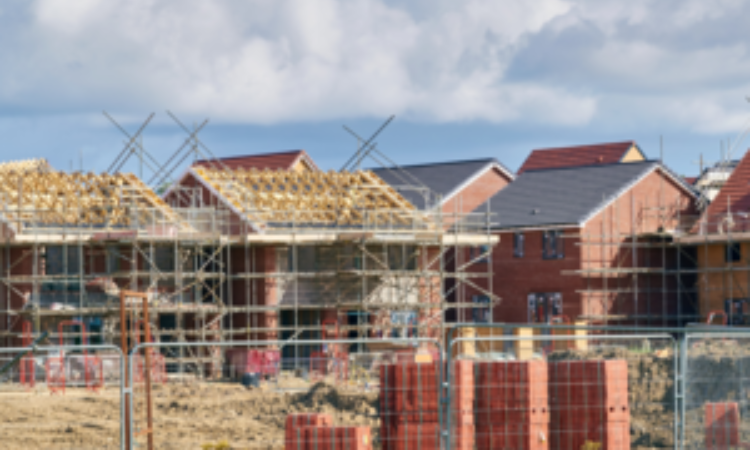Housebuilding near well-connected train stations will receive a default “yes” in future if they meet certain rules, ensuring more homes are built
- Default “yes” for tens of thousands of new homes near train stations to speed regeneration and get spades in the ground faster
- Housing Secretary empowered to remove planning blockages and fast‑track large-scale applications.
- Second phase of reforms streamlining consultations with application decisions cut by 40% to deliver 1.5 million homes under the Plan for Change
Housebuilding near well-connected train stations will receive a default “yes” in future if they meet certain rules, ensuring more high-quality, affordable homes are built in and around our key towns and cities, saving commuters time and boosting access to housing.
Thousands more working families and commuters will be able to live and work near train stations thanks to this drive to speed up housebuilding, which will help connect people to towns and cities, and open the door to new job and education opportunities.
Housebuilders will be encouraged to build more homes near these transport links, and councils in England will also now be required to tell the government when they intend to reject new housing developments over a certain size, with the Housing Secretary able to have the final say on whether they should go ahead.
These changes will be introduced alongside proposals to streamline the statutory consultee process, further saving developers time and money, ensuring spades can get in the ground quicker to meet the government’s 1.5 million homes target.
It also builds on work already underway following the launch of Platform4, a new property company set to unlock 40,000 homes on brownfield land near railway stations, with four sites already earmarked, including Newcastle Forth Goods Yard and Manchester Mayfield – supporting the governments wider plan for boosting productivity, growth and living standards across the north
Housing Secretary, Steve Reed:
“I promised we’d get Britain building and that’s exactly what we are doing. But it has to be the right homes in the right places and nearby transport links are a vital part of that.
“We’re making it easier to build well-connected and high-quality homes, using stronger powers to speed things up if councils drag their feet, and proposing to streamline the consultation process to cut back delays.
“This is about action: spades in the ground, breathing new life into communities, and families finally getting the homes they need.”
Chancellor of the Exchequer, Rachel Reeves, said:
“We’re ending years of dither and delay by green lighting affordable new homes for working people.
“This is another demonstration that our Plan for Change is getting spades in the ground faster, connecting people with jobs and opportunities closer to where they live, and boosting towns and cities across the country.”
Planning reforms to give greater certainty and strength for development around well-connected rail stations, including trains and trams, will be proposed through a new pro-growth and rules-based National Planning Policy Framework, which will be consulted on later this year.
Recognising the significant benefits for jobs and growth that can be unlocked by building around train stations, these rules will extend to land within the Green Belt, continuing efforts to ensure that a designation designed in the middle of the last century is updated to work today.
The default “yes” will also apply equally across all local authorities, so that these benefits are seized across the country. The proposals will also include minimum housing density standards for these sites, expected to be exceeded in many cases, to make the most of sustainable growth opportunities for local housing, jobs, and businesses.
Measures will also require councils to inform government when they’re inclined to block applications of 150 homes or more so ministers can decide whether to step in and make the decision instead, making sure that good housing projects don’t get lost.
Particular attention will be paid to those applications where a planning committee intends to refuse it contrary to the advice of planning officers.
Applications called in by ministers will also be sped up through the removal of the mandatory requirement for inquiries, with the option to consider matters through written representations before reaching a decision where appropriate.
Alongside this, the package will drive down the number of applications considered by some statutory consultees by up to 40%, saving time, energy, and money. It will also consult on proposals to remove Sport England, The Gardens Trust and Theatres Trust from the list of organisations that have to be consulted by law.
Unleashing the biggest era of housebuilding in this country’s history remains at the heart of the Plan for Change, going further and faster to build 1.5 million new homes this Parliament.
The Housing Secretary is expected to make further announcements to speed up housebuilding across the country before the end of the year.
Notes
- The government published proposals on brownfield passports earlier this year: Brownfield Passport: Making the Most of Urban Land – GOV.UK
- The government previously announced the Platform 4 initiative to unlock up to 40,000 new homes on surplus railway land: First-time buyers to benefit from 40,000 new homes on brownfield railway land – GOV.UK
- A consultation on statutory consultees launches today (Tuesday 18 November).
source: GOV





 ENFIELD
ENFIELD HACKNEY
HACKNEY HARINGEY
HARINGEY ISLINGTON
ISLINGTON










